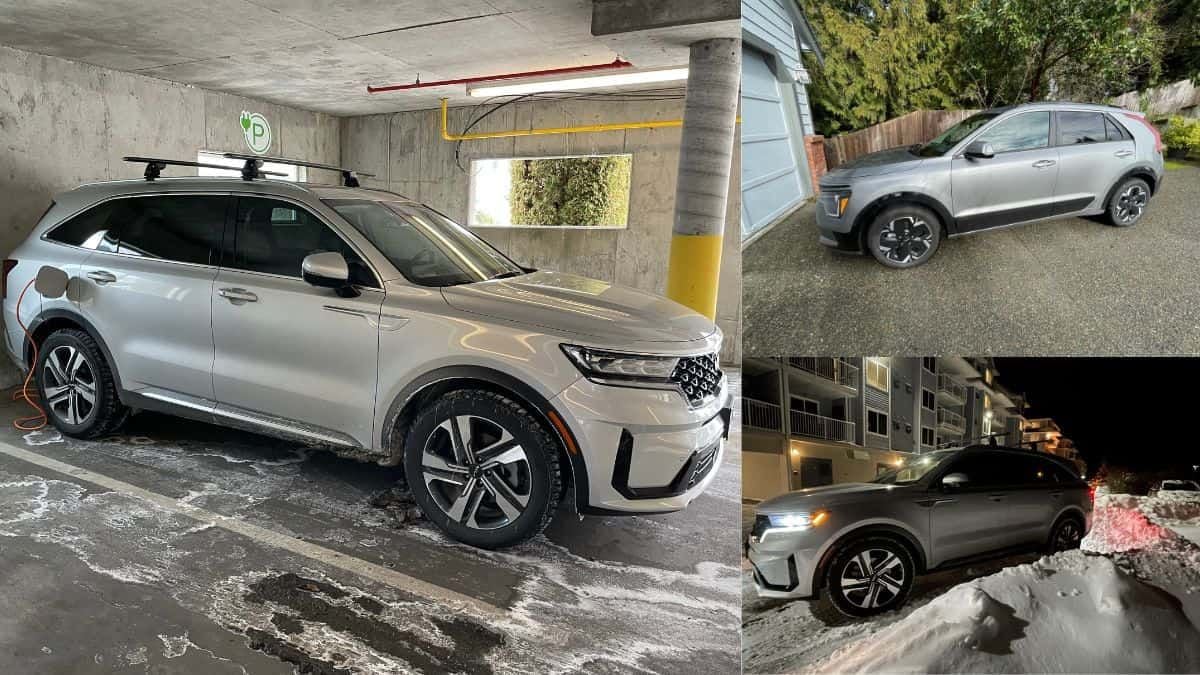Norway is similar to the US state of Minnesota when it comes to winter weather and average temperatures. Currently, Norway also leads the world in EV adoption with over 82% of all new cars sold in the country last year being EVs (and another 8% being plug-in hybrids (PHEVs)). Norway may see more than 90% of all new cars sold being EVs this year as they seek to end fossil fuel car sales by 2025. Norway’s lead role in EV sales is well established at this point since the largest segment of new vehicle sales, if not the outright majority, have been EVs for the last six years in a row. Since Norway leads the world in EV adoption, and since they regularly contend with harsh winter weather similar to what people in Chicago, Illinois experienced last week, we can safely assume that if EVs were as terrible in winter weather as some media outlets make them out to be, Norwegians wouldn’t be buying anywhere near as many EVs as they are.
EVs (and PHEVs) actually handle winter weather quite well, and as Car and Driver tested are much more efficient at providing cabin heat than gas powered cars. But that doesn’t mean EVs have no issues or that specific EV care isn’t called for when temperatures drop below freezing. The lack of detail and research into what was really going on in many of the news stories about last week’s terrible situation for all those Tesla drivers in Chicago is what we should all be focused on, more so than how well EVs perform in harsh winter weather (they perform well enough, generally speaking). Were there simply several Tesla drivers unfamiliar with best practices converging on supercharging sites at roughly the same time? Was there some kind of power supply issue affecting Tesla supercharging stations, perhaps due to the colder than normal temperatures? Did most of these Tesla drivers keep their vehicles outside (rather than in garages) in the days before the situation became so bad? Whatever was behind the problem, besides the unusually low temperatures, was not sufficiently investigated and instead the finger was pointed at the vehicles. That’s just bad journalism folks.
So what precautions should drivers of any vehicle (not just EVs) take when temperatures drop well below freezing? The US National Highway Traffic Safety Administration has a very useful list of precautions that drivers in cold climates should make themselves familiar with. One set of precautions seems particularly relevant to the drivers that had such a terrible experience in the Chicago area last week: The battery drain due to heating can be minimized by keeping your electric vehicle as warm as possible during freezing temperatures. A common way to do this is plugging your vehicle in at night during the winter – keeping the battery in its optimal temperature ranges. Journalists covering the story in Chicago should have been asking affected drivers if they had kept their vehicles plugged in overnight, kept them in garages, preconditioned their batteries before attempting to charge or taken other steps to deal with the unusual circumstances. As responsible journalists, they also should have done more research or included more detail of the specific best practices for EVs in winter and pointed out that gas powered cars can also die just as easily in such frigid temperatures when their 12 Volt batteries get too cold or moisture freezes in their fuel tanks or fuel lines.
Besides following the best practices linked to above, what else could be done to improve EVs’ performance in frigid temperatures? Automakers could potentially improve thermal management of their batteries by improving insulation or software to handle the most brutal cold weather. Similar to the concept of engine block heaters, EVs (and PHEVs) could be kept plugged in and charging overnight or a battery “blanket” might help those without garages deal with extreme cold (or heat) too. Entrepreneurs might create insulated, or heated, garage space for EVs where those without garages (or those who have lost power) could keep their cars for short periods and charge them up too.
But what if your EV or PHEV can not be charged up when the temperature drops, either because you don’t have access to a charging point or because your vehicle is under recall (like my neighbor’s Toyota Rav 4 Prime PHEV which shouldn’t be charged in temperatures below 41 degrees F)? This is when drivers must be resourceful and understand the requirements of their vehicles, or in the case of the recall on the Rav 4, unfortunately it may mean relying on either the gasoline engine alone or finding a warmer place to park. EVs and PHEVs can handle the worst winter weather, but they have some different requirements and different operational characteristics than strictly gasoline powered vehicles. Drivers may not realize this and manufacturers, and dealerships, should be doing more to educate new owners about such details (and in the case of recalls, should be compensating drivers that can’t or shouldn’t use their vehicles as intended due to faulty parts or design). Lastly, journalists should be just as informed as the drivers of these types of vehicles to avoid spreading misinformation and causing undue concern.
Do you have questions or concerns about driving an EV or a PHEV in winter weather? Please leave your comments below.
Images courtesy of Justin Hart.
Justin Hart has owned and driven electric vehicles for over 15 years, including a first generation Nissan LEAF, second generation Chevy Volt, Tesla Model 3, an electric bicycle and most recently a Kia Sorento PHEV. He is also an avid SUP rider, poet, photographer and wine lover. He enjoys taking long EV and PHEV road trips to beautiful and serene places with the people he loves. Follow Justin on Torque News Kia or X for regular electric and hybrid news coverage.





